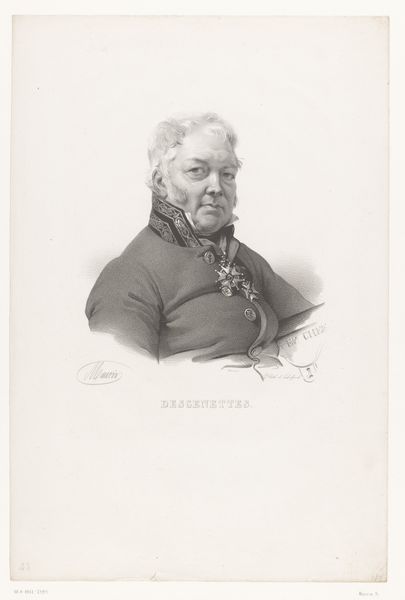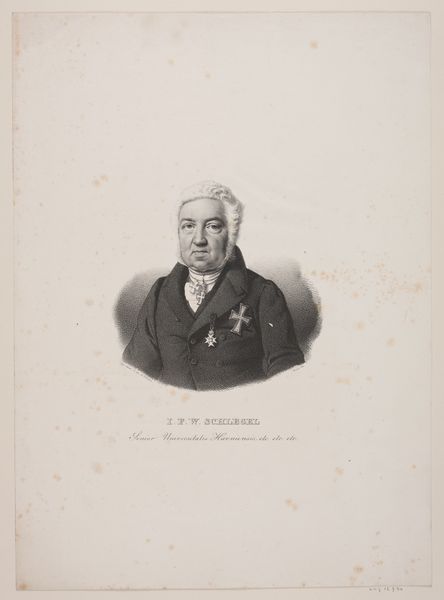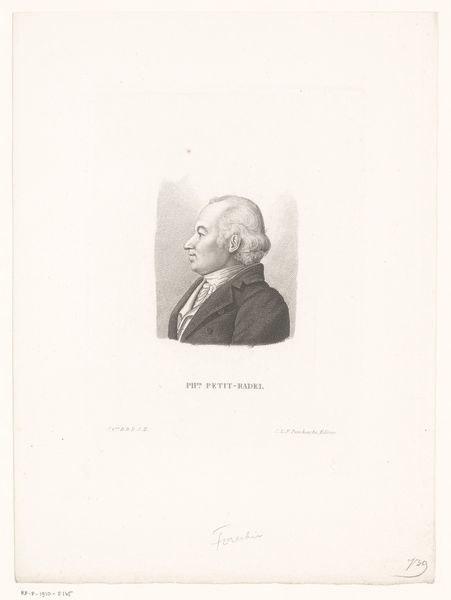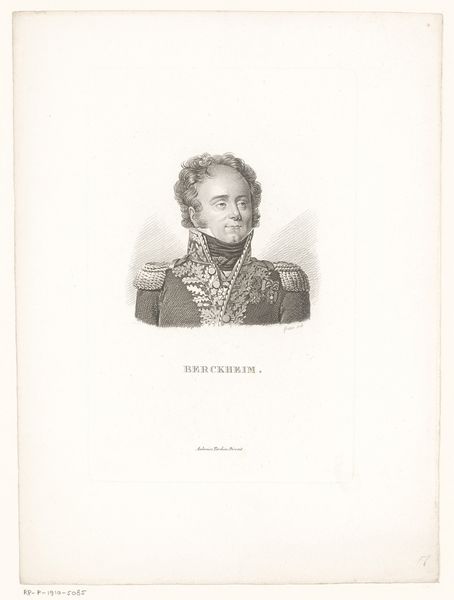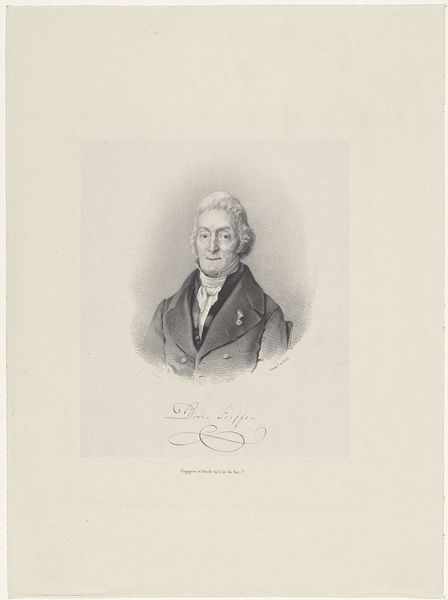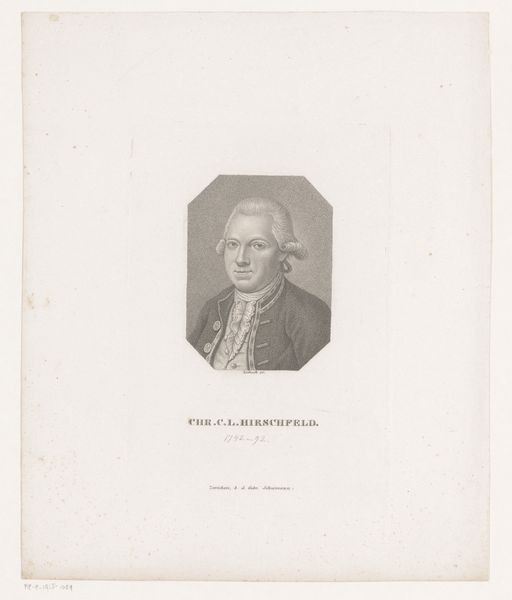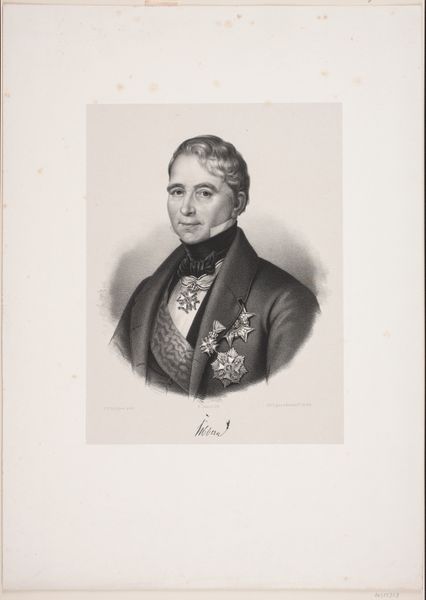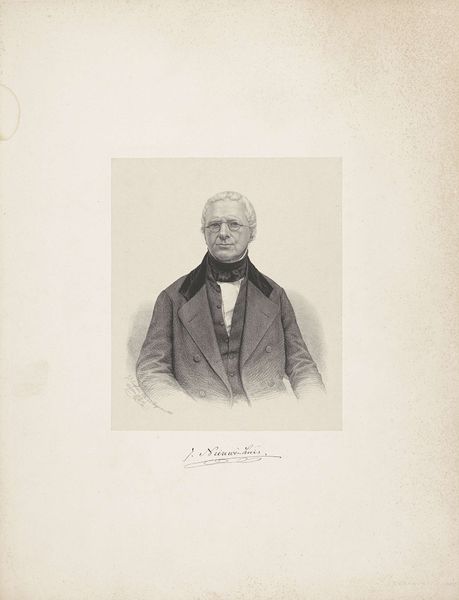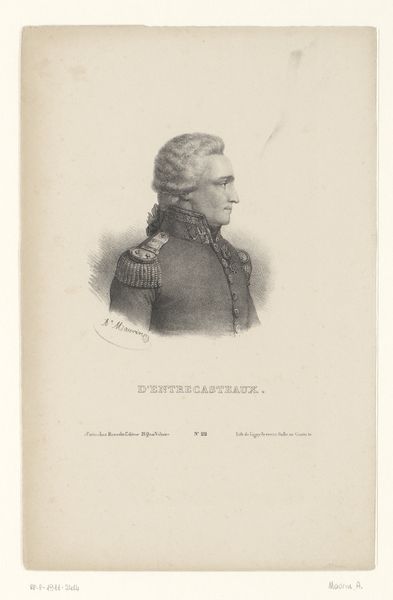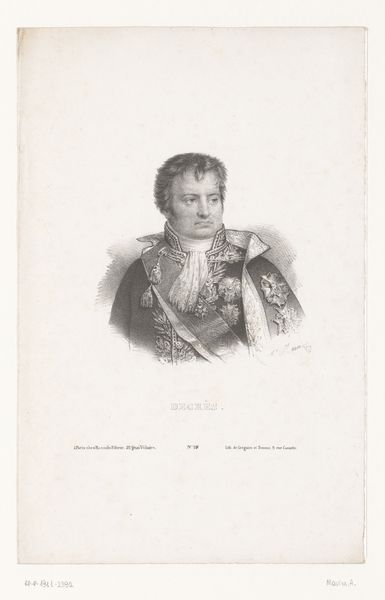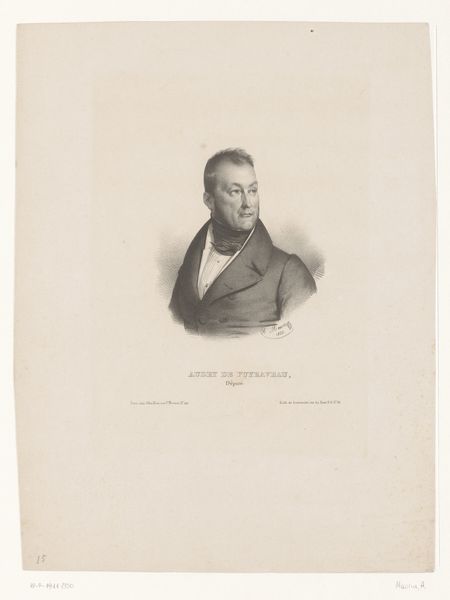
#
pencil drawn
#
photo of handprinted image
#
light pencil work
#
photo restoration
#
pencil sketch
#
old engraving style
#
joyful generate happy emotion
#
limited contrast and shading
#
ink colored
#
pencil work
Dimensions: height 216 mm, width 141 mm
Copyright: Rijks Museum: Open Domain
Curator: Charles Aimé Forestier gifted us this finely wrought portrait in pencil, "Portret van René-Nicolas Dufriche Desgenettes", placing it somewhere between 1818 and 1832. I'm immediately struck by the subtle interplay of light and shadow across the sitter's face. Editor: Indeed. And beyond that subtle play, there’s an air of detached authority conveyed through the sitter's erect posture and piercing gaze. The rendering is quite classical, almost neoclassical, in its measured restraint and meticulous hatching. Curator: Note, for instance, the way the light catches the edge of the lapel and collar; also the expert use of shading in creating volume, while still maintaining a relative austerity. Are we, perhaps, in the presence of coded messages, a hidden symbolism about the subject's rank or professional dedication? Editor: Of course, the medals speak to status and accomplishment – valor, perhaps even specific achievements. But I see, too, a more universal representation: the archetype of the dignified, if slightly world-weary, leader. A close viewing, reveals a complex interplay between the lines defining the costume's decoratives, each holding some sort of coded identity for the depicted figure. Curator: It's remarkable how Forestier uses purely tonal variation to convey this so strongly; each line, hatch, dot performs an equal but discrete role in the work's balance. It’s as if he has reduced the essence of portraiture to a pure study in light, volume, and representation. Editor: Yes, reduced in form perhaps, but not in layered meaning. In fact, Forestier masterfully invites the viewer to construct narratives based not only on the physical likeness but the iconic framework built around it. The medals, the uniform, these are all signifiers pointing to a larger social and historical narrative, and yet one must see also that the formal interplay here seems to reinforce that man’s character is a story written on his very body; lines etched over time. Curator: It's quite striking when you consider all of these qualities converging in such a limited visual space. The economy of line is absolutely key. Editor: Indeed. Seeing how Forestier captures both personal identity and cultural roles with minimal form yields so much interpretative wealth. It really makes one contemplate both art and history in surprising ways.
Comments
No comments
Be the first to comment and join the conversation on the ultimate creative platform.
